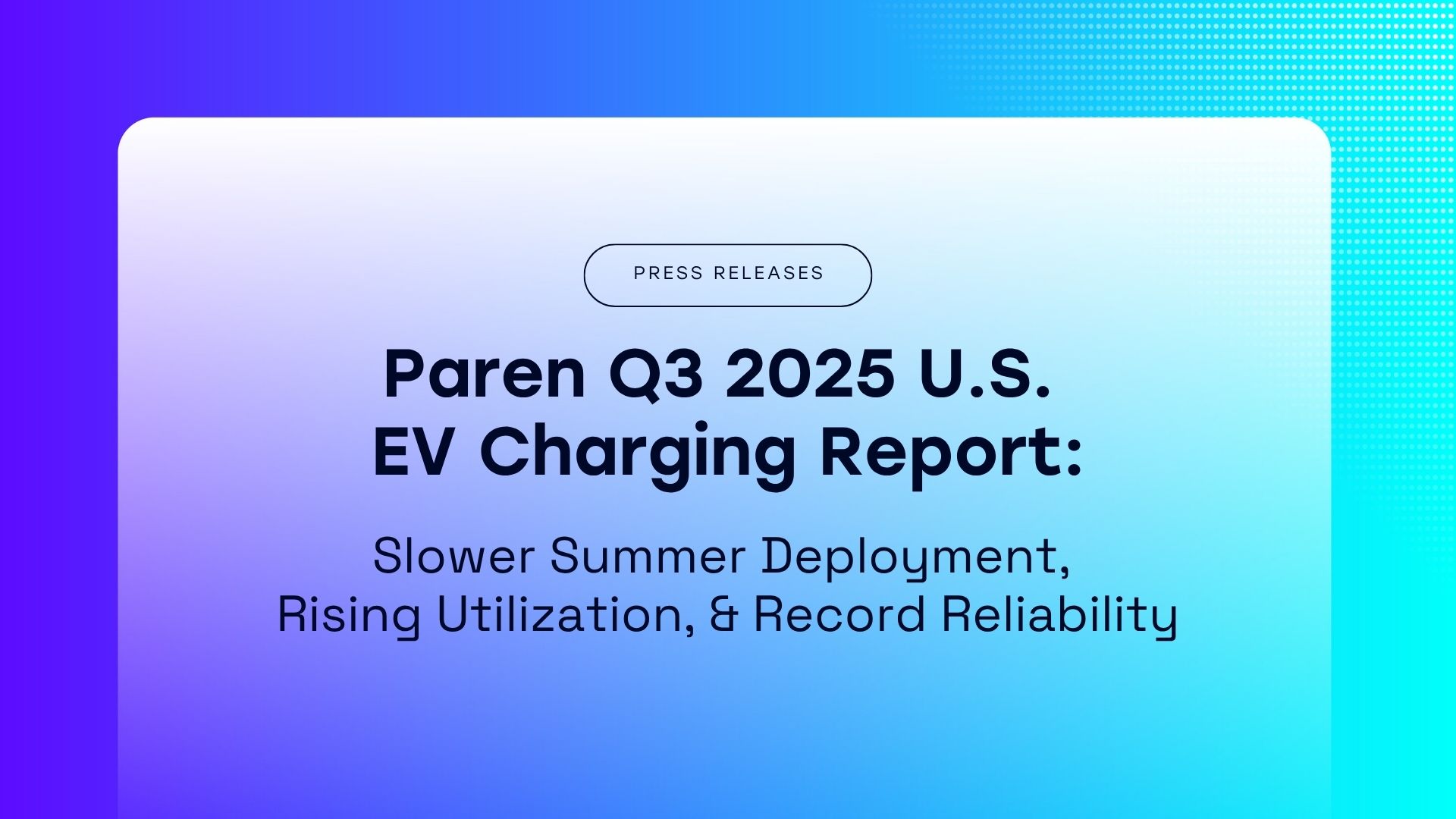October 20, 2025
Corporate
Paren Q3 2025 U.S. EV Charging Report: Slower Summer Deployment, Rising Utilization, and Record Reliability

Paren’s Q3 2025 State of the U.S. Fast Charging Industry Report reveals that while new fast-charging installations slowed slightly this summer, utilization and reliability reached new highs — signaling a maturing market that’s optimizing rather than merely expanding.
The U.S. added 699 new stations and 4,061 ports in Q3, bringing the total to 64,486 DC fast-charging ports nationwide. Although this represents a 12% dip in new stations and a 7.7% decline in new ports compared with Q2, the trend is consistent with previous years as operators focus resources on supporting peak summer travel demand.
Quarter on quarter, the pace of new deployments slowed slightly, following a seasonal pattern.
But EV Drivers enjoyed a more robust and extensive network of fast charging stations during the summer.
Utilization rates and reliability are noticeably up while prices remained mostly unchanged.
— The Paren Team
Report Highlights:
- Paren’s national reliability score climbed to 92.3, the highest ever recorded on a quarterly basis. Thirty two states improved their reliability scores in Q3, led by Oklahoma (+4.4 points), Mississippi (+2.6), and Idaho (+2.0). Maintenance and uptime are becoming more strategic priorities as federally and state-funded chargers come online, with proactive operators investing in preventive maintenance and faster outage response to sustain user trust.
- Average utilization rose to 16.7%, up from 16.1% in Q2 — with summer travel and growing corridor coverage boosting charging activity across 45 states. Tesla stations continued to dominate growth, adding 1,820 new ports and maintaining a 53% market share, while non-Tesla networks saw mixed patterns as NACS adoption accelerated.
- National average fast-charging prices ticked up slightly to $0.49 per kWh, remaining within a narrow $0.48–$0.54 band. Rates range from $0.85 in Hawaii to $0.42 in Nebraska, with most states seeing minimal changes of just one or two cents. Despite price adjustments around peak travel holidays, Paren’s analysis shows no clear correlation between pricing and utilization yet.
Download the Report:
- The full report is available at https://www.paren.app/reports.
- Watch our on-demand webinar where Paren CTO Bill Ferro and CEO Florent Breton discuss the report insights.